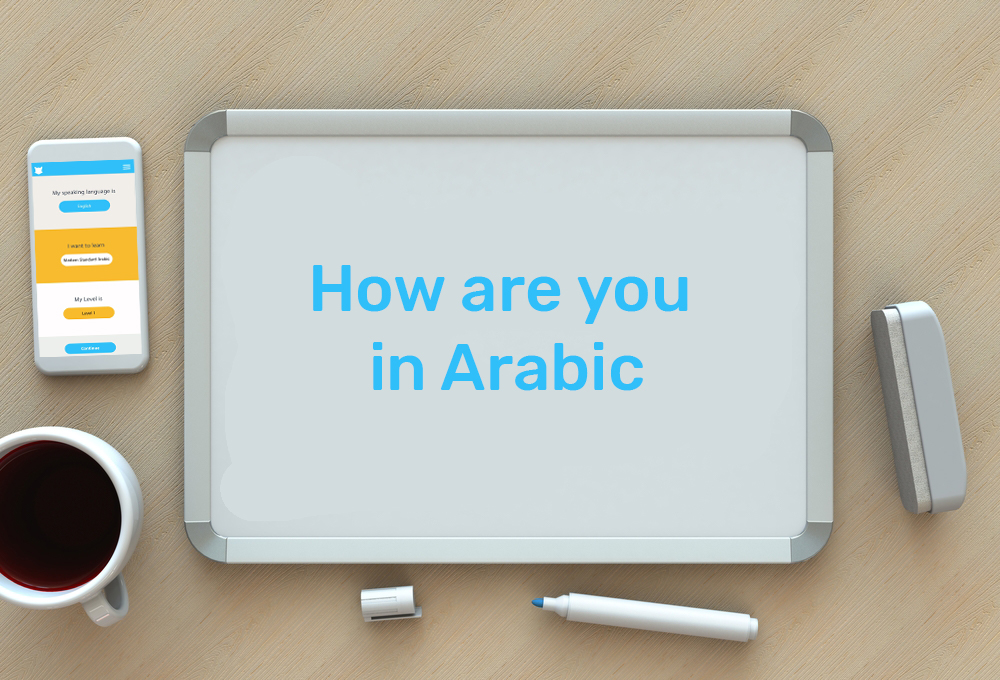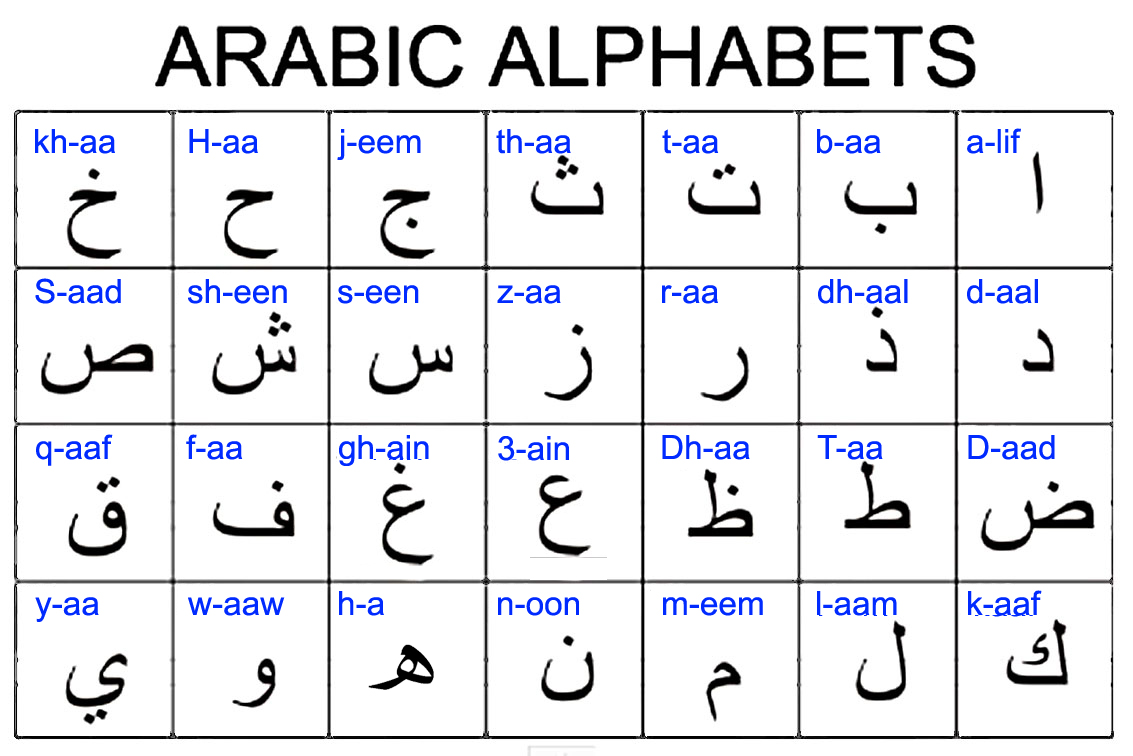How are you arabic language – Delving into the realm of Arabic greetings, we embark on a journey to unravel the cultural significance, grammatical intricacies, and contextual nuances of the phrase “how are you?” in the Arabic language. This exploration promises to illuminate the etiquette, customs, and modern adaptations that shape this essential aspect of Arabic communication.
From the warmth of traditional greetings to the influence of technology, this guide provides a comprehensive understanding of how to navigate the complexities of Arabic greetings with confidence and cultural sensitivity.
Cultural Significance of Greetings

Greetings hold immense significance in Arabic culture, serving as an integral part of social interactions and reflecting the values of hospitality, respect, and warmth. They extend beyond mere pleasantries and play a crucial role in establishing connections, building relationships, and conveying social norms.Arabic
greetings are diverse and vary depending on the context, time of day, and relationship between individuals. Common greetings include “As-salamu alaykum” (Peace be upon you), “Sabah al-khair” (Good morning), and ” مساء الخير ” (Good evening). These greetings often carry religious undertones, reflecting the deep-rooted Islamic faith in the region.Non-verbal
cues also play a significant role in Arabic greetings. Eye contact, facial expressions, and body language convey respect, sincerity, and warmth. A firm handshake, a warm embrace, or a gentle touch on the shoulder can add depth and meaning to the verbal greeting.
Grammatical Structure of “How Are You?”
The Arabic grammar used to express “how are you?” follows a specific structure and word order. The sentence is typically composed of three main elements: a pronoun, a verb, and an adverbial phrase.
The pronoun used depends on the person being addressed. For example, “anta” (أنت) is used for a male singular, “anti” (أنتِ) for a female singular, and “antum” (أنتم) for a group of people.
The verb used is typically “kayfa” (كيف), which means “how.” It is followed by an adverbial phrase that describes the state of being. Common adverbial phrases include “bi khayr” (بخير), meaning “well,” and “bi salama” (بسلامة), meaning “safely.”
Word Order
- The pronoun comes first.
- The verb “kayfa” comes second.
- The adverbial phrase comes last.
For example, the sentence “How are you?” in Arabic would be “kayfa haluk” (كيف حالك) for a male singular, “kayfa haluki” (كيف حالكِ) for a female singular, and “kayfa halukum” (كيف حالكم) for a group of people.
Variations and Contextual Usage

The greeting “How are you?” in Arabic varies depending on the formality of the situation and the relationship between the speakers. Here are some common variations:
In formal settings, such as business meetings or interactions with strangers, the most common greeting is “Kaifa haluk?” (كيف حالك؟) for men and “Kaifa haluki?” (كيف حالكِ؟) for women. This translates directly to “How is your condition?” and is considered polite and respectful.
Informal Greetings
In informal settings, such as among friends and family, there are several more casual ways to say “How are you?”:
- Shloonak?(شلونك؟): This is a common greeting in the Gulf region and is used by both men and women. It is considered friendly and informal.
- Eish aamalak?(إيش عامالك؟): This greeting is common in Egypt and means “What’s up?” or “What’s new?”. It is also considered informal and is often used among friends.
- Bizzey el hal?(بزيّن الحال؟): This greeting is common in Jordan and Palestine and means “Is everything okay?”. It is a more formal way of asking “How are you?” and is often used in situations where you are not sure how the other person is doing.
Cultural Nuances
The choice of greeting in Arabic is not only based on formality but also on cultural nuances. For example, in some cultures, it is considered impolite to ask someone “How are you?” if you do not know them well. In these cultures, it is more common to greet someone with a general salutation, such as “As-salamu alaykum” (Peace be upon you).
Cultural Etiquette and Customs
In Arabic-speaking cultures, greetings are an essential part of social interaction and hold significant cultural importance. Proper etiquette and customs must be observed to show respect and establish a positive rapport.
Etiquette for Greeting
- Verbal greetings:“As-salamu alaykum” (Peace be upon you) is the standard greeting, with “Wa alaykum as-salam” (And peace be upon you) as the appropriate response.
- Non-verbal cues:A handshake is customary, especially among men. Women may greet each other with a handshake, a nod, or a verbal greeting.
- Physical contact:Physical contact, such as hugging or kissing, is generally reserved for close friends and family.
Customs and Traditions
Greetings in Arabic-speaking regions vary depending on the local culture and traditions. For example:
- In the Gulf region:A traditional greeting includes touching noses and exchanging cheek kisses (for men) or a handshake (for women).
- In Egypt:A handshake is the most common greeting, accompanied by a warm smile and a friendly “Sabah el-kheir” (Good morning) or “Masa el-kheir” (Good evening).
- In Morocco:Greetings often involve a handshake and a kiss on both cheeks, even among strangers.
Importance of Respecting Norms
It is crucial to respect the cultural norms and customs when using “how are you?” in Arabic-speaking cultures. Using the appropriate greeting, observing proper etiquette, and understanding the local traditions demonstrate respect and can help build positive relationships.
Modern Adaptations and Technological Impact
In the contemporary digital age, technology has significantly influenced the usage of “how are you?” in Arabic.
The advent of online communication platforms has led to the proliferation of virtual greetings. Instant messaging applications, social media platforms, and video conferencing tools have created new avenues for Arabic speakers to connect and exchange pleasantries.
Online Greetings
Online greetings in Arabic often reflect the informal nature of digital communication. Common greetings include:
- As-salamu alaykum(Peace be upon you) – A traditional Islamic greeting, often used in formal settings.
- Salam(Peace) – A more casual greeting, commonly used among friends and acquaintances.
- Marhaba(Welcome) – A friendly greeting, often used to welcome someone or start a conversation.
- Shukran(Thank you) – Used to express gratitude or acknowledge a greeting.
Emojis and Digital Expressions, How are you arabic language
Emojis and other digital expressions have become an integral part of Arabic greetings online. These visual elements add a layer of expressiveness and emotional context to text-based communication.
- Smiling face emojis (😊, 😁, 😄) convey happiness and friendliness.
- Heart emojis (❤️, 💕, 💖) express love and affection.
- Winking face emojis (😉, 😜, 😏) indicate humor or playfulness.
- Thumbs-up emojis (👍, 👍🏼, 👍🏽) signify approval or agreement.
Outcome Summary

In conclusion, understanding the intricacies of “how are you?” in Arabic goes beyond mere words; it’s a gateway to fostering meaningful connections and navigating the cultural landscape of the Arab world. By embracing the nuances of grammar, context, and etiquette, we can effectively communicate respect, empathy, and a genuine interest in the well-being of others.
FAQ Explained: How Are You Arabic Language
What is the most common way to say “how are you?” in Arabic?
The most common way to say “how are you?” in Arabic is “كيف حالك?” (kayf haluk?) for males and “كيف حالكِ؟” (kayf haluki?) for females.
What is the proper etiquette for greeting someone in Arabic?
When greeting someone in Arabic, it is customary to shake hands and make eye contact. It is also considered polite to greet the eldest person in the group first.
How does technology influence the use of “how are you?” in Arabic?
Technology has made it easier to stay connected with friends and family in the Arab world. As a result, online greetings and digital expressions have become more common.